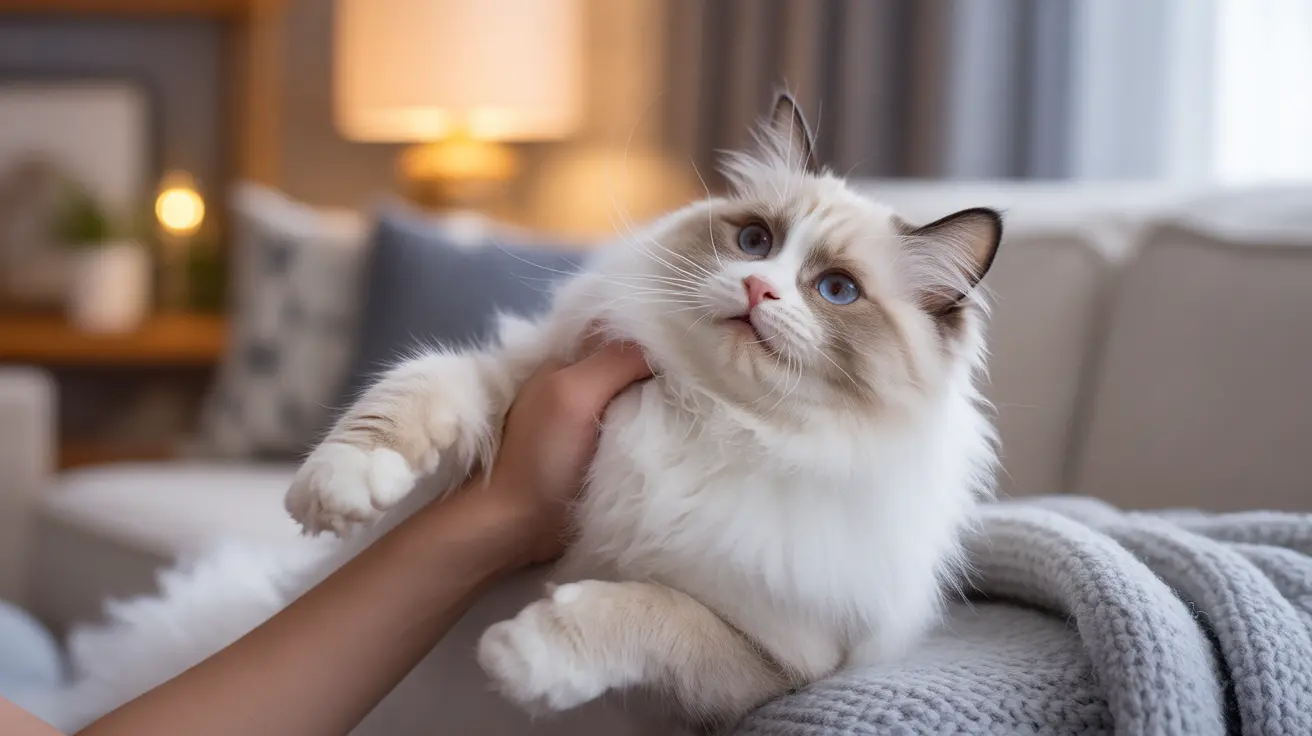If you've ever wondered why cats go limp when grabbed by their scruff, you're not alone. This behavior, often misunderstood by cat owners, has important implications for how we handle our feline friends. While mother cats naturally carry their kittens by the scruff, the response in adult cats is quite different and requires careful consideration.
Understanding the science behind scruffing and its effects on adult cats is crucial for responsible pet ownership. Let's explore why this happens and what it means for your cat's wellbeing.
The Kitten Reflex vs. Adult Response
In kittens, the scruff response is a natural survival mechanism called the "flexor reflex." When mother cats carry their young by the loose skin at the back of the neck, kittens instinctively go limp and pull their legs up, making transport easier and safer. This reflex typically disappears after the first few weeks of life.
However, when adult cats go limp during scruffing, they're experiencing something entirely different. Rather than a natural reflex, this response is more akin to a stress-induced state of immobility.
Understanding the Stress Response
When an adult cat goes limp during scruffing, they're actually exhibiting a form of learned helplessness. This psychological response occurs when animals face a situation they perceive as inescapable. The apparent calmness is misleading – your cat isn't relaxed but rather in a state of fear or distress.
- Dilated pupils
- Flattened ears
- Rapid breathing
- Tail twitching
- Complete immobility
The Physical Impact of Scruffing
Scruffing an adult cat can have several physical consequences. Unlike kittens, adult cats are heavier and their bodies aren't designed to be supported by the scruff alone. This can lead to:
- Neck strain
- Muscle tension
- Potential tissue damage
- Increased risk of injury, especially in overweight cats
Better Alternatives to Scruffing
Modern veterinary practice recommends several alternatives to scruffing for handling adult cats:
- Using a towel wrap technique
- Gentle full-body support
- Positive reinforcement training
- Creating a calm environment for handling
When Scruffing Might Be Necessary
While scruffing should generally be avoided, there are rare emergency situations where it might be required:
- During urgent medical procedures
- In life-threatening situations
- When other handling methods have failed
Even in these cases, proper technique and body support are essential to minimize stress and prevent injury.
Frequently Asked Questions
Why do adult cats go limp when you grab their scruff even though kittens have a natural reflex?
Adult cats go limp due to a stress response rather than the natural reflex seen in kittens. This immobility is a form of learned helplessness and indicates discomfort rather than relaxation.
Is scruffing an adult cat safe, or can it cause physical pain or stress?
Scruffing adult cats is generally not safe and can cause both physical pain and psychological stress. It can lead to neck strain, muscle tension, and long-term trust issues between cat and owner.
What does it mean behaviorally when a cat becomes motionless after being scruffed?
When a cat becomes motionless after scruffing, it's displaying a fear-based response known as learned helplessness. This is not a sign of relaxation but rather indicates the cat is experiencing significant stress.
What are the recommended alternatives to scruffing for handling or restraining adult cats safely?
Recommended alternatives include using towel wraps, providing full-body support when handling, implementing positive reinforcement training, and creating a calm environment for interactions.
When, if ever, is scruffing appropriate for adult cats and how should it be done properly?
Scruffing should only be used in genuine emergencies or during critical medical procedures when no other options exist. If necessary, always support the cat's body weight and minimize the duration of restraint.
By understanding why cats go limp when scruffed and choosing more appropriate handling methods, we can better care for our feline companions while maintaining their trust and well-being.






